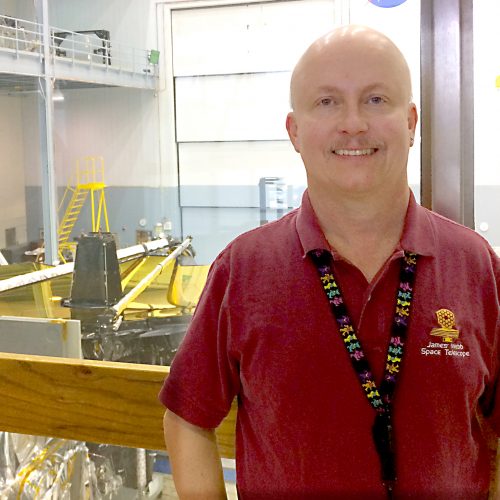 Dean C. Hines uses instruments aboard space telescopes to investigate active galaxies, quasars, stellar evolution, and the formation and evolution of planetary systems, including our Solar System. He obtained a BSc and MSc in physics and astrophysics from the New Mexico Institute of Mining and Technology, and a Ph.D. in astronomy from the University of Texas at Austin. He was as a member of the Instrument and Science Team for Near Infrared Camera and Multi-Object Spectrometer (NICMOS) aboard the Hubble Space Telescope, and then the Instrument and Science Team for the Multiband Imaging Photometer for Spitzer (MIPS) aboard the Spitzer Space Telescope. Dr. Hines is currently an Observatory Scientist at the Space Telescope Science Institute where he is as member (and former Team Lead) for the Mid-Infrared Instrument (MIRI), which was launched aboard the James Webb Space Telescope in December, 2021. He has co-authored more than 180 contributions in astronomy and astrophysics appearing in peer-reviewed journals.
Dean C. Hines uses instruments aboard space telescopes to investigate active galaxies, quasars, stellar evolution, and the formation and evolution of planetary systems, including our Solar System. He obtained a BSc and MSc in physics and astrophysics from the New Mexico Institute of Mining and Technology, and a Ph.D. in astronomy from the University of Texas at Austin. He was as a member of the Instrument and Science Team for Near Infrared Camera and Multi-Object Spectrometer (NICMOS) aboard the Hubble Space Telescope, and then the Instrument and Science Team for the Multiband Imaging Photometer for Spitzer (MIPS) aboard the Spitzer Space Telescope. Dr. Hines is currently an Observatory Scientist at the Space Telescope Science Institute where he is as member (and former Team Lead) for the Mid-Infrared Instrument (MIRI), which was launched aboard the James Webb Space Telescope in December, 2021. He has co-authored more than 180 contributions in astronomy and astrophysics appearing in peer-reviewed journals.